This article was co-authored by Luba Lee, FNP-BC, MS and by wikiHow staff writer, Hannah Madden. Luba Lee, FNP-BC is a Board-Certified Family Nurse Practitioner (FNP) and educator in Tennessee with over a decade of clinical experience. Luba has certifications in Pediatric Advanced Life Support (PALS), Emergency Medicine, Advanced Cardiac Life Support (ACLS), Team Building, and Critical Care Nursing. She received her Master of Science in Nursing (MSN) from the University of Tennessee in 2006.
wikiHow marks an article as reader-approved once it receives enough positive feedback. This article has 13 testimonials from our readers, earning it our reader-approved status.
This article has been viewed 2,793,607 times.
No one likes throwing up, but sometimes it's inevitable. Vomiting is the body's natural reaction to the introduction of substances or irritation in the gut. In most cases, the vomiting will be irregular and harmless. Follow this guide to help make sure you have an easier time tossing your cookies.
Steps
Vomiting Comfortably
-
1Find somewhere to vomit. If you're at home, toilets, sinks, and buckets will be your best bet. Sinks aren't really great because if your vomit comes out chunky, you'll probably have to fish your own vomit out of the drain.
- If you're outside, try to get away from people and their belongings. Nothing makes you more ticked off when some random drunk comes and spews all over your car. Try to find a forest or an empty lot. You can throw up on the open ground in one of those areas.
-
2Make sure you need to vomit. Some people are assaulted with waves of nausea, and aren't really sure that they need to throw up. In this case, vomiting might not be all that comfortable because it's unnecessary. Other people know that they're going to vomit — perhaps they've had too much to drink — and purging is an inevitability. Look for these telltale signs that you or someone else is going to vomit:Advertisement
-
3Try to prevent nausea and vomiting before it's too late. There are a few things that you can try to do to prevent your body's vomiting response. Try these before you force yourself to vomit:
-
4Let your body vomit or induce vomiting yourself. Your body will do the trick itself if you give it enough time, or if you just want to get it all over with as soon as possible, use the following emetics:
- Medications, such as syrup of ipecac, or salt- or mustard-water, can be taken orally to induce vomiting.
- Use your fingers to stimulate the uvula. Take one or two fingers, place them in the back of your mouth, but do not try to touch the uvula, which is the little dangling flap of skin at the back of the throat.
- Watch another person vomit.[3] Seeing another person throw up can increase your likelihood to vomit. While it's difficult to spontaneously will nausea on someone else just to induce vomiting, it is possible to watch videos online.
-
5Try to vomit. Now that you're sure you need to vomit, accuracy will be the next objective. When the vomiting feeling comes over you, get your mouth close to the toilet bowl or container, preventing spray or spillage. If you're outside, the closer you are to the ground the less splatter you'll produce.
-
6Drink something. When you're done, drink some water. It will wash away the acidic taste. Also, if you have to vomit again, your stomach isn't empty; vomiting with an empty stomach can be very painful.
Being Aware Signs of Danger
-
1Know that most vomiting is normal, but some vomiting could present larger medical problems. A very common cause of vomiting is gastroenteritis, an inflammation of the gastrointestinal tract which, while painful, is not a serious medical condition.
-
2Call a doctor or nurse about your condition if[2] :
- The nausea lasts for more than a few days or there is a possibility of pregnancy.
- Personal treatments are not effective, you suspect dehydration, or a known injury has occurred, causing vomiting.
- Vomiting lasts for more than a day, or accompanying diarrhea lasts for more than 24 hours.
- For infants, vomiting lasts more than a few hours, diarrhea and signs of dehydration are present, there is a fever higher than 100 °F (38 °C), or if the child hasn't urinated for six hours.
- For children over age six, vomiting lasts more than 24 hours, diarrhea combined with vomiting lasts for more than 24 hours, there are signs of dehydration, there is a fever higher than 102 °F (39 °C) or the child hasn't urinated for six hours.
-
3Seek immediate medical attention if[2] :
- You see blood in the vomit (bright red or "coffee grounds" in appearance).
- You have severe headaches or a stiff neck.
- You experience lethargy, confusion, or a decreased alertness.
- You experience severe abdominal pain.
- You count a fever over 101 °F (38 °C).
- You measure rapid breathing or pulse.
-
4Consult with a specialist if you think you may have an eating disorder such as Bulimia. Bulimia is the urge to vomit after eating in order to control weight. People with bulimia eat large amounts of food in a short time (binge) and then find a way to get rid of the food (purge).[4] Bulimia is treated with psychological counseling, but is curable.
Preventing Nausea
-
1Eat foods carefully, consistently, and in proportion. We all know that eating the wrong thing, or eating too much of it, can cause vomiting. But how we eat food also plays a part in preventing nausea in the first place.
- Eat small meals throughout the day instead of a couple of big meals at long intervals.
- Eat slowly and chew your food before you swallow it.
- Avoid foods that are hard-to-digest, such as dairy, spicy, acidic, fatty, or fried foods.[5]
- Eat foods that are cold or at room temperature instead of foods that are warm or hot if you find them distasteful.
-
2Drink enough and rest properly after a meal. Giving your body the proper time and adequate position to digest food may help keep you from feeling nauseated in the first place.
- Drink liquids (preferably water) in between instead of during meals, and stay on pace to consume between 6 to 8 8-ounce glasses of water per day.
- Keep your head at least a foot above your feet if you decide to rest or sit down after a meal.
- Activity may worsen nausea. Don't overexert yourself or engage in strenuous physical activity if you think it may lead to vomiting.
Warnings
- If you have long hair, tie it up if you can, to prevent vomit from getting in your hair.⧼thumbs_response⧽
- Avoid vomiting on rugs, carpet, or furniture as these surfaces are likely to stain.⧼thumbs_response⧽
- If you are pregnant or taking medication and the feeling of vomiting occurs, contact your primary care doctor or obstetrician.⧼thumbs_response⧽
References
- ↑ http://www.parenthacks.com/2008/10/is-the-kid-goin.html
- ↑ 2.02.12.22.3http://www.webmd.com/digestive-disorders/digestive-diseases-nausea-vomiting?page=3
- ↑ http://www.healthguidance.org/entry/14541/1/Easy-Ways-to-Make-Yourself-Throw-Up.html
- ↑ http://www.webmd.com/mental-health/eating-disorders/bulimia-nervosa/mental-health-bulimia-nervosa
- ↑ http://www.everydayhealth.com/digestion-photos/foods-to-avoid-during-digestive-problems.aspx#/slide-1
About This Article
It can be hard to get comfortable if you feel like you have to throw up, find a private place, such as a bathroom if you’re indoors, or a wooded area if you’re outside. Relax and let your body vomit naturally, or if you’re in a hurry, you can gently touch your uvula, or the flap of skin at the back of your throat. If that doesn’t work, you can take a dose of syrup of ipecac to induce vomiting. Once you feel yourself getting ready to vomit, lean over the toilet or crouch close to the ground to minimize splattering. Drink a glass of water after you’re finished. Keep reading for tips on when to call a doctor about your nausea, such as if you suspect you’re dehydrated.

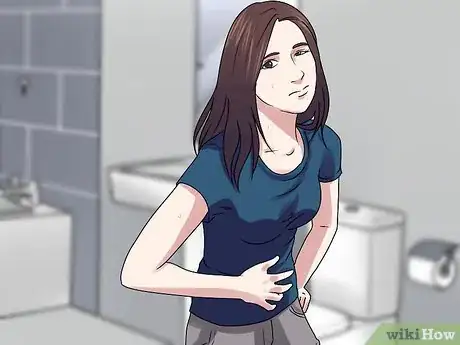




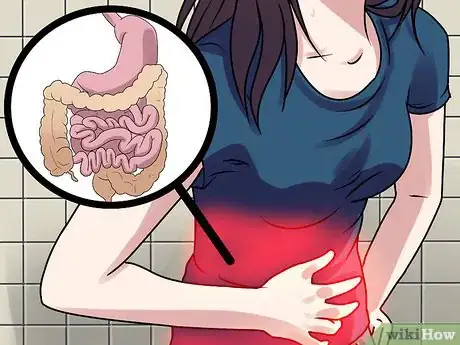


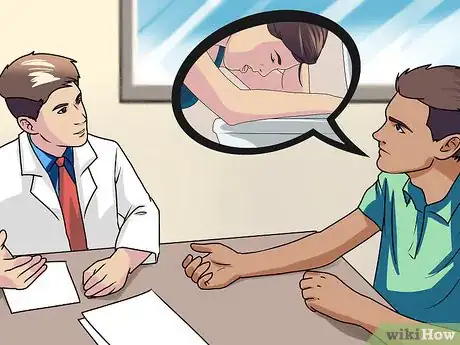


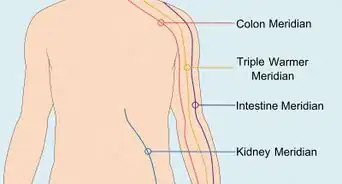




-Step-9-Version-5.webp)
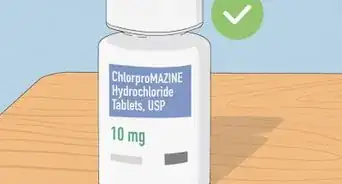

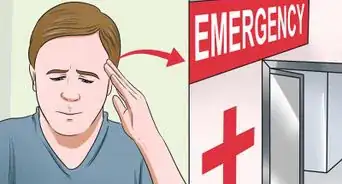

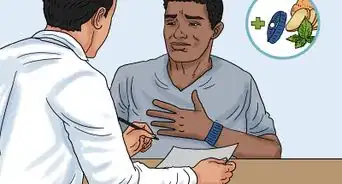





















































Medical Disclaimer
The content of this article is not intended to be a substitute for professional medical advice, examination, diagnosis, or treatment. You should always contact your doctor or other qualified healthcare professional before starting, changing, or stopping any kind of health treatment.
Read More...